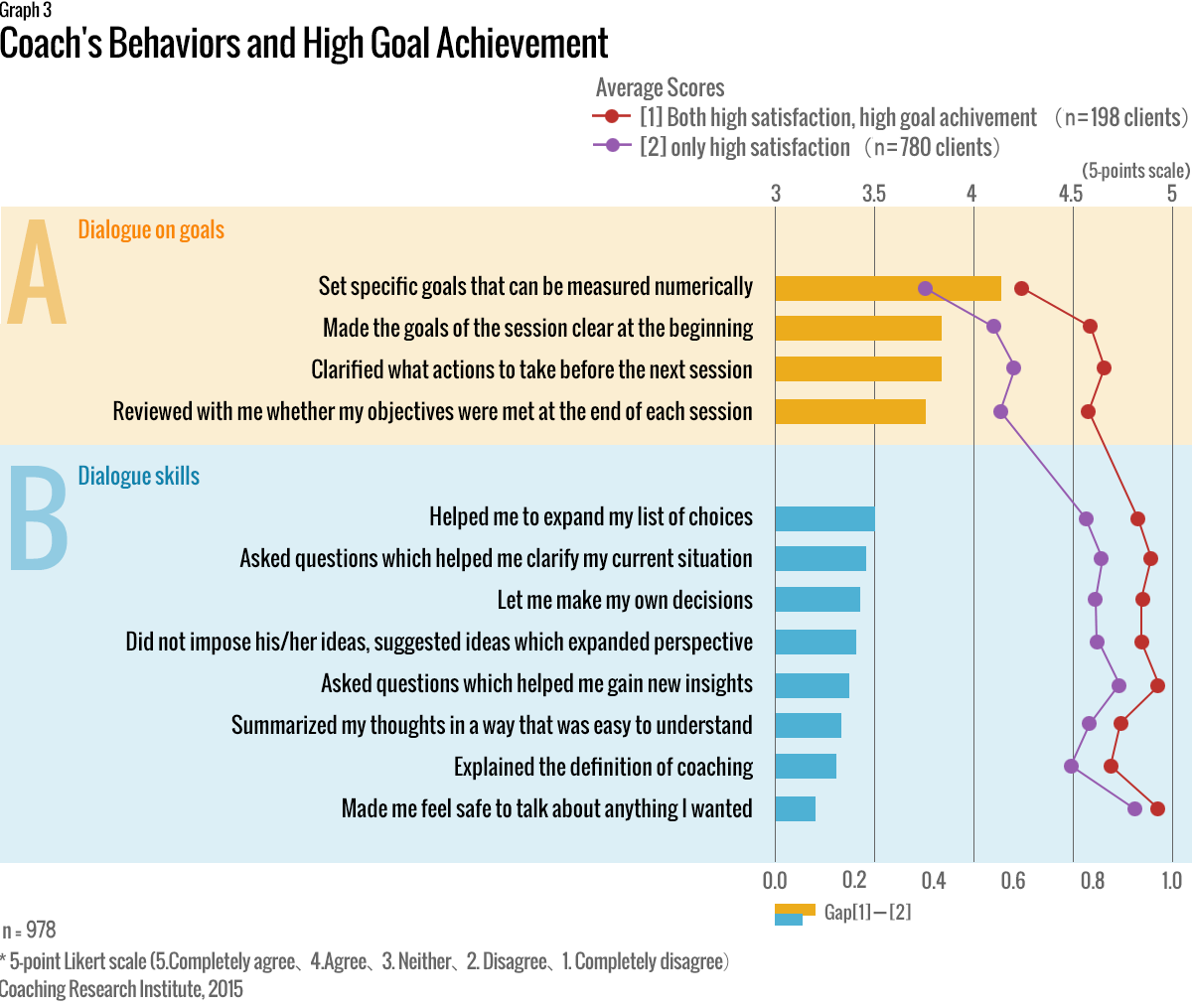Coaches who talked more about goals in their coaching sessions helped clients achieve their goals.
What Coaches Do to Help Clients Achieve Their Goals
It is quite common to see client satisfaction used to measure the effects of coaching. However in recent years, there have also been different approaches using such methods as ROI, goal achievement rate and so on.
In this study, we looked at what sort of coaching can make clients not only be satisfied with coaching, but also able to achieve their goals.
Our findings actually showed that many clients were satisfied with the coaching engagement, but were not able to achieve their goals. We also discovered that coaches who helped successfully achieve their clients' goals talked more about goals in their coaching sessions.
Graphs 1 and 2 below shows the results on clients' satisfaction with coaching and whether they were able to achieve their goals.

Clients who gave the highest score in “satisfaction” were 54%, but only 12% gave a high score in “goal achievement”.
This means that all the clients who were satisfied with coaching did not necessarily achieve their goals.
So what do coaches do to help their stakeholders achieve their goals?
Using the same data, we have divided the clients into two groups and looked at what behaviors the coaches demonstrated in each group:
1) Both high satisfaction, high goal achievement
2) Only high satisfaction
The following 12 items showed a significant difference (P < 0.05, d > 0.2). This means that these were coach’s actions and behaviors which helped clients in achieving their goals.

Let us first look at Category A which included items with the widest gaps. This category shared a common theme regarding “dialogue on goals”. These included coach's behaviors such as “setting specific goals” and “clarified actions to take before the next session.”
Making goals clear, reviewing objectives and clarifying what actions to take before the next session are all important interactions for the coach to help equip their clients with the capability to achieve their goals.
Next, let's look at Category B. This category is mainly about “dialogue skills” so here we will see items such as “questions which help clients gain new insights”, “let clients make their own decisions” and “made clients feel safe to talk about anything”. The gaps may not be as wide but these are also items which can influence the clients in achieving their goals.
As coaches continue to have coaching sessions with their clients, the clients may unconsciously talk about other topics outside of their goals. When this happens, it may be necessary for the coach to ask questions or make suggestions to help clients realize that the current dialogue is not talking about goals and let them decide what sort of dialogue is needed to move towards achieving their goals.
From this, we can say that coaches who can help their clients achieve their goals have high dialogue skills and use them in order to have dialogue regarding goals in the coaching sessions.
The purpose of coaching is for the clients to achieve their goals. As coach, always keep in mind whether your coaching sessions involve dialogues which help clients move towards achieving their goals.
Research overview
- No. of Samples:
- 1,805 clients (in 22 countries) who received coaching
- Period:
- January 2013 - October 2014
- Survey method:
- Web-based survey was conducted after the coaching engagement was completed
- Survey tool:
-
Coaching Skills Evaluation System(CSES)
“Coach’s Behaviors” category (12 items), “Effects from Coaching” category (2 items)